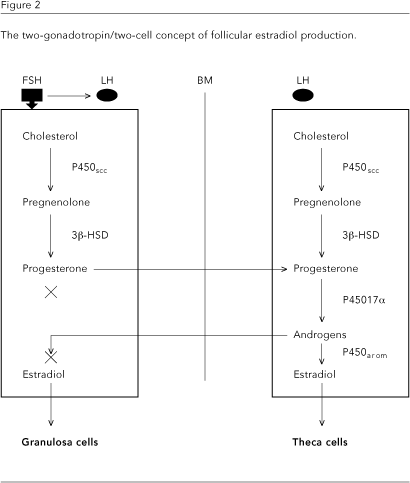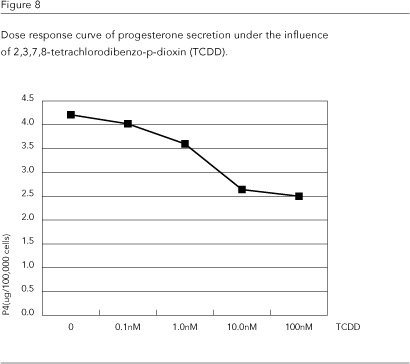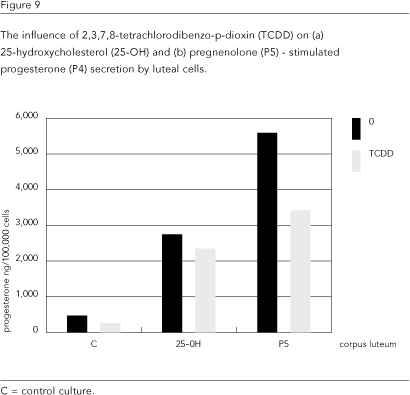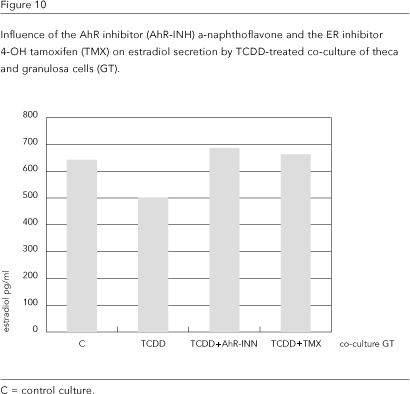To characterize the action of 2,3,7,8-tetrachlorodibenzo-p-dioxin (TCDD) during both the follicular and luteal phases of the ovarian cycle, the direct effect of TCDD was investigated in vitro using a system of primary monolayer cell culture. Granulosa and theca cells were collected from the preovulatory follicles and cultured as a co-culture, thus resembling follicles in vivo. Luteal cells were isolated from the corpora lutea collected during the midluteal phase. In both cases cells were isolated from the ovaries of animals exhibiting natural estrus cycle. Results of these experiments suggest that TCDD decreases estradiol secretion by follicular cells and progesterone secretion by luteal cells in a dose-dependent manner. It was also shown that TCDD disrupts steroidogenesis through its influence on the activity of enzymes involved in the steroid biosynthesis cascade. In luteal cells, its action is mediated via the aryl hydrocarbon receptor (AhR) and is probably independent of estrogen receptor (ER) stimulation. Endocrine disruptors that interfere with estradiol production in the follicles can act as ovulatory disruptors, and while interfering with progesterone production by luteal cells they can act as abortifacients.
Dioxins; Hormones; Endocrine Disruptors











